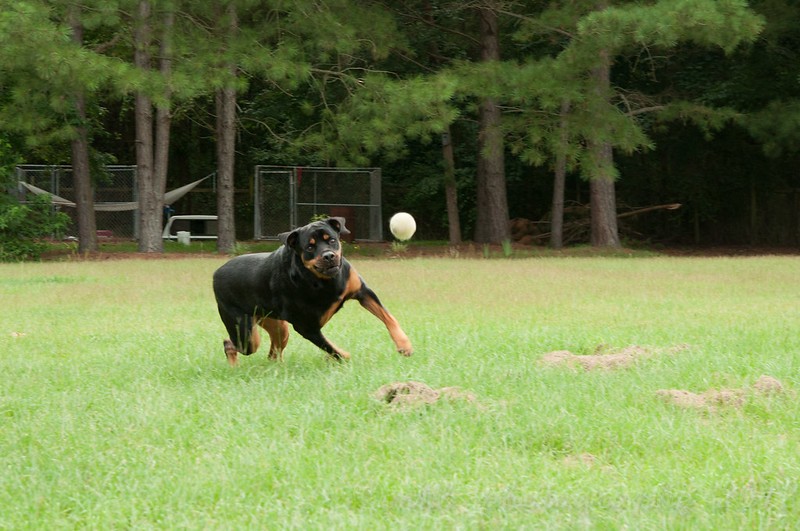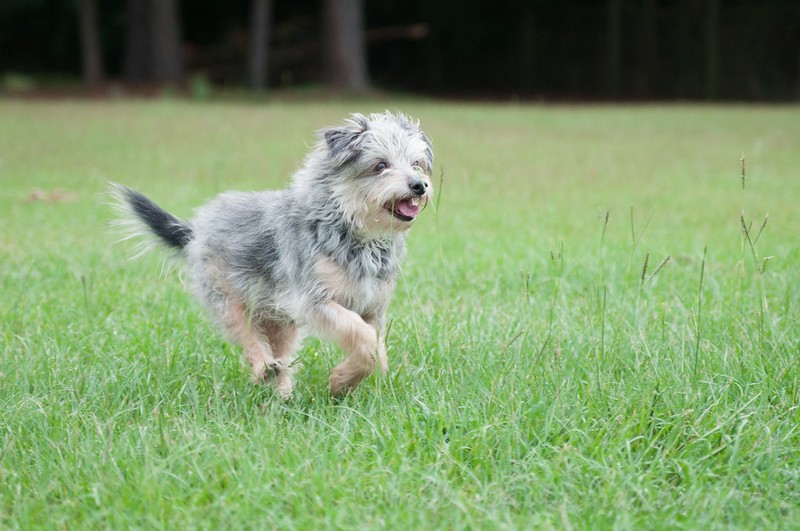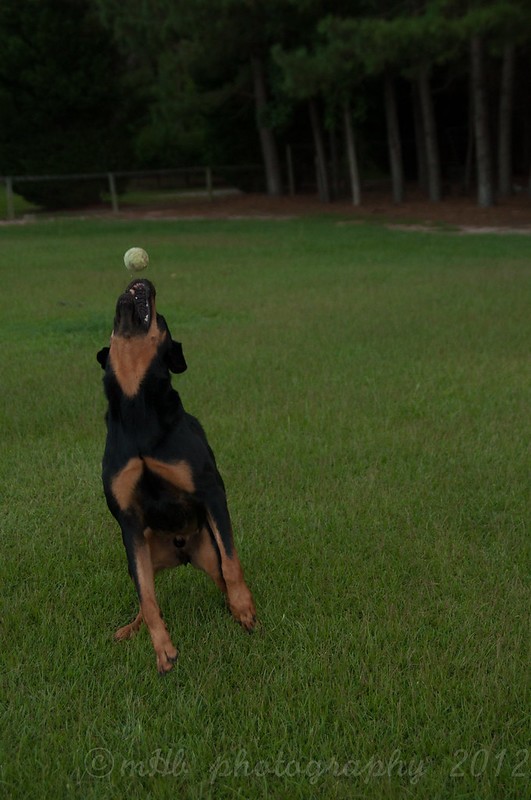MonicaBH
TPF Noob!
- Joined
- Nov 4, 2009
- Messages
- 181
- Reaction score
- 16
- Can others edit my Photos
- Photos OK to edit
I haven't really tried shooting "action" before (necessarily), so mostly what I was doing was an experiment that went horribly awry.
I was trying to get some pictures of my dogs playing ball last night. I tried shooting in manual as well as the action/sport setting on my D90; I was using my Tamron 28-75mm f/2.8. I started off with the dogs stopped and focus on them, and tried to follow/pan with them while shooting in burst/continuous mode.
SOOC examples below:
1.)
f/7.1, ISO 800, 1/125s, 52mm (manual)

2.)
f/2.8, ISO 800, 1/500s, 75mm (auto)

3.)
f/3.2, ISO 800, 1/800s, 75mm (auto)

This was the best of the set:
f/3.2, ISO 800, 1/800s, 75mm (auto)

Halp, please?
I was trying to get some pictures of my dogs playing ball last night. I tried shooting in manual as well as the action/sport setting on my D90; I was using my Tamron 28-75mm f/2.8. I started off with the dogs stopped and focus on them, and tried to follow/pan with them while shooting in burst/continuous mode.
SOOC examples below:
1.)
f/7.1, ISO 800, 1/125s, 52mm (manual)

2.)
f/2.8, ISO 800, 1/500s, 75mm (auto)

3.)
f/3.2, ISO 800, 1/800s, 75mm (auto)

This was the best of the set:
f/3.2, ISO 800, 1/800s, 75mm (auto)

Halp, please?










![[No title]](/data/xfmg/thumbnail/34/34070-2a43e701f983f62ada1c66a54d00be4e.jpg?1734164507)








